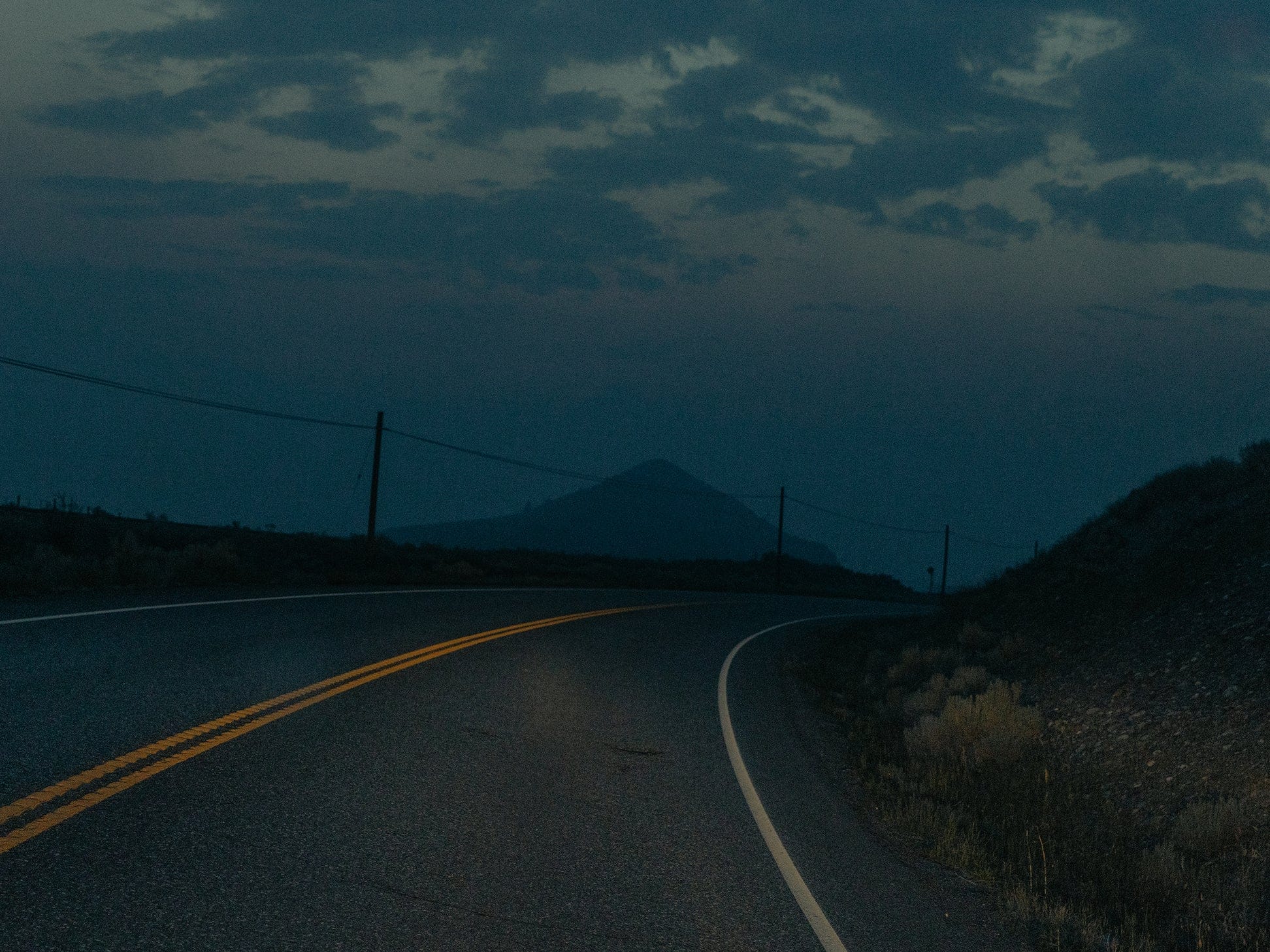Campsite Classics

LET US NOW PRAISE TIMELESS GEAR! A TRIBUTE TO THE OLD STANDBYS—AND THEIR CONTEMPORARY COUNTERPARTS—THAT KEEP US AT HOME OUTDOORS AND ON THE ROAD.
A funny thing happens when folks walk past the shrine to vintage camping gear that guests at La Vita Pines RV Park call the "Old Cooler Stage." First they wonder if it's some kind of ancient lost-and-found. Then they notice something—maybe it’s a cooler, maybe it’s a camp stove or a lantern—that brings a far-off look to their eye.
“People start saying, ‘Hey, I used to have that! My dad used to have that! My grandparents still have that one!’” explains Greg Garrett, who started collecting throwback gear about five years ago, when he and his wife, Leesa, bought their campground in the shadow of Colorado’s Spanish Peaks. His display—mostly mid-century finds, in front of a small stage where singalongs sometimes break out—is a perennial source of delight among campers.
“People take selfies in front of it,” Garrett says. “They remember stuff from their childhood. It’s just all about connecting with the past.”
Sure, the outdoor gear industry in 2024 is a multi-bazillion-dollar juggernaut of nonstop novelty and innovation. But you don’t have to look far around camp to find gear that looks and functions largely the same as it did in 1974. Or 1924. Maybe even 1874.
Sometimes the old ways work best. And sometimes the hiss of an old lantern, the glint of sunlight off a metal cooler, or the smell of bacon in a well-seasoned pan evoke a moment of contentment from way back in the day.
That’s what camping’s all about, after all, Garrett says: collecting memories.
WE DREAM OF KEROSENE

The R.E. Dietz Company manufactured its first oil lantern in 1840, three decades before one William Coffin Coleman was even born. The Dietz No. 80 Blizzard Hurricane burns 26 hours on 31 ounces of lamp oil or kerosene, with fewer moving parts than a gas lantern and a nicer, softer light than an LED.
AN HEIRLOOM YOU CAN SLEEP UNDER

Pendleton has been weaving wool blankets in its Oregon mill for more than a century, and throws like the Pendleton Yakima Camp Blanket—a hefty blend of virgin wool and cotton, available in a twin or queen—look largely indistinguishable from the one your great-grandparents had at the cabin. Heck, you might have theirs.
SWISS ACCOUNT

6: Number of tools Victorinox founder Karl Elsener built into the first Swiss Army knife in 1897—a long blade, short blade with file, screwdriver, can opener, awl and corkscrew. Today's Victorinox Sportsman has a similar array.
87: Number of tools built into the Wenger Giant, released in 2006, including a fish scaler, a golf shoe–spike wrench and watch-repair tools. The stunt knife weighed more than 2 pounds.
Wax Romantic

Do you need a waxed canvas daypack? It depends: Are you a 19th-century gamekeeper in the Scottish Highlands? If not, you can likely count on similar durability and water resistance from modern synthetic materials. But boy, they sure look good, and with care, a made-in-the-USA heritage pack like the Duluth Pack Wanderer will stand up to a lifetime of adventuring.
THE INTERNATIONAL COLEMAN COLLECTORS CLUB: BY THE NUMBERS
150+
Members—from a roll in the thousands—who attend the group's annual conference to geek out on the 124-year-old company's vintage stoves and lanterns.
1981
Debut year of the Coleman Light, the ICCC's thrice-annual newsletter, which dishes on club happenings and Coleman-device minutiae.

$229.99
List price of the Coleman 1900 Collection 3-in-1 Propane Stove, with cast-iron grill and griddle plates, inspired by the brand's earliest camp stoves.
5
Weight, in pounds, of the 385-page Guide to Vintage Coleman Products 1900–1983, collaboratively written and published by members of the ICCC.
NOW ISN’T THAT SPECKLED

It was in your grandfather’s camp box, then your mom’s, and now it’s in yours: that blue speckled, rolled-rim enamelware camp mug. The thing is bombproof. You swear it makes coffee taste better. And whatever else you’ve seen on the gear-shop shelves, enamelware has always been there, a ubiquitous material (usually blue) for mess-kit plates, bowls, cups and percolators.
So how did it become visual shorthand for camp? Enamelware caught on in American kitchens before the Civil War, and by the early 20th century, outdoor writers were touting its benefits in the field. In 1906, Great Smokies woodsman Horace Kephart sang its praises in his influential book Camping and Woodcraft. “It’s so much easier to clean than tin or aluminum,” he wrote, adding that it didn’t conduct heat like aluminum, which “blisters the unwary mouth.”
“An aluminum cup is an abomination,” agreed contemporary Stewart Edward White, in his 1911 text Camp and Trail. “The coffee or tea will cool before you can get your lips next to the metal.” In 1916’s Touring Afoot, trails advocate Claude Powell Fordyce urged hikers to tote an enamelware cup, “so as to save the lips.”
Such endorsements landed, and as recreational camping took off, enamelware flourished in camp boxes, particularly the speckled variety resembling granite (which is why enamel-coated cookware is sometimes called graniteware). And even as new lightweight materials have emerged—new alloys, plastics, silicone—gear manufacturers haven’t given up on it.
“We believe there’s most certainly nostalgia associated,” says Courtney Gearhart, a spokesperson for REI, which stocks an Alpine Mountain Gear Enamelware Mug, among other brands. And is it important that it’s blue? “REI can confirm the colors do, in fact, matter,” Gearhart says. “Our bestselling color is blue, by far, and when we shift, other enamel sets don’t resonate with customers in the same way.” Clearly, they know it makes the coffee taste better.
All the Perks

The art of making coffee in the woods hasn't changed much since the 1800s, when percolators caught on (and you can get right out of here with those instant packets). The three-piece GSI Outdoors Glacier Stainless Percolator, available in four sizes with a glass- windowed top, looks good on a stove and holds up to the campfire.
BANDANARAMA

"Some folks call the bandana a 101 because, they say, it has 101 uses. The true number of uses are only limited by the human mind. There will always be at least one more way to put the bandana to work."
—Cowboy Bandana: Uses and Abuses, by Lee Thomson (1993). It's certainly true of Tawa Threads Co. Bandanas: strong organic cotton and a generous 22 inches square.
THE CULT OF THE CAMPMATE

Looking for an efficient outdoor-kitchen setup for camping and road-tripping? You may want a chuck box. (You know, like a chuck wagon, but in box form). And while there are plenty of brands and designs to choose from, few seem to inspire the same online devotion as the circa-early-aughts DoskoSport Campmate.
“These things are awesome,” proclaims one Reddit user in a recent appreciation thread. “Fantastic all around...I searched for two years for mine,” affirms a fan on another board. “If you know, you know,” de- clares another Redditor. “Best chuck box ever made.”
At 16 inches tall, 18 inches deep and 2 feet wide, the molded-plastic Campmate looks like a swollen tackle box. Pop the latches and its genius is revealed. The face opens to create swing-up tables on either side. The sturdy top accommodates a camp stove; the lid becomes a sink. Inside are spice and condiment racks, a slideout cutlery drawer and more clever storage. Self-contained when stowed, it’s the length of a tailgate when fully deployed.
The only problem with the Campmate: it’s discon- tinued. DoskoSport was a short-lived subsidiary of a Texas plastics manufacturer that’s since pivoted to pet products. Brand new, the Campmate reportedly retailed in the mid–double digits, but its scarcity and online rep has created a cutthroat resale market, with buyers known to shell out more than $300.
Robert Thomason is one of them. The North Carolina overlander and YouTube gear reviewer extolled the Campmate with 27 minutes of video after finding one locally in 2017. “Nothing compares,” he said more recently. “It’s all in one. Your stuff won’t get dusty or dirty. You don’t need separate totes. You open it, and within five minutes, you’re cooking.”
Thomason was so impressed, he set out to buy the plastic molds and the rights to the Campmate. Alas, he found its designers have gone dark. So take care of the thing if you find one—the greatest chuck box ever made probably isn’t coming back.
Vinyl Me Please

Not that they ever left, but yesteryear's woven-vinyl lawn chairs get the loving comeback treatment. The ParkIt Voyager, a rugged aluminum chair that honors the retro campsite lounger, adds clever functionality: a micro-cooler on the chair's underside. Plus, a carry strap to tote it on your back.
IT'S EASY BEING GREEN

Before Stanley was synonymous with a kaleidoscopic collection of insulated tumblers and the hydration-happy influencers who tote them, the brand was known for one shade and one shade only: hammertone green, a sage-like hue with a powder-coat fin- ish. It’s the classic color of the burly, all-steel, silver-lid thermoses that launched William Stanley’s business in 1913. The contemporary version, the immodestly branded Stanley Classic Legendary Bottle, comes today in core, annual and seasonal colors. Whichever you pick, the double- walled vacuum insulation is just as clutch around the campsite.
GOT US PIE-EYED

What do you make in this device? Across much of the U.S., you're likely pressing a bush pie, a mountain pie or, if you're not very PC, a hobo pie. If you're Australian, then you're toasting a jaffle, mate. In parts of the Midwest, you might be hankering for a tonka pie. But if you're from Wisconsin—where Rome Industries has been making Rome Cast-Iron Pie Irons since 1964—then ope, you're making a pudgie pie, bud. Whatever you call it, there’s no limit to what you can load up and toast between two slices of bread.
A KINDLING SPLITTER'S BEST FRIEND

Founded in Germany in 1919, Adler has a century-long reputation as one of the most trusted names in ax man- ufacturing. The Adler Rheinland Hatchet—with its hickory handle, forged-steel head and classic striped design—is light and versatile, a must-have around camp.
THE TOAST KING OF THE PRAIRIE

Winnipeg stove-and-lantern man Norm Coghlan didn't even invent the spidery wire contraption known as the Coghlan's Camp Stove Toaster—he just bought out an obscure American manufacturer's stock in 1959, then popularized the thing. Who knew enough midcentury campers craved toast to build a whole empire around? Today, family-run Coghlan's has sold more than 7 million and has a roughly 400-item product line, running a gamut from tent stakes to weenie forks to plastic egg holders.
FLANNEL LININGS PLAYBOOK

The first flannel-lined L.L.Bean sleeping bag was the shape of a Hershey bar, cost $13.75, and debuted in the company’s Fall 1942 catalog. Eight decades of microfiber fleeces and polyester taffetas and mummy-bag tapers later, there is still no better way for a camper to stay warm and cozy. Pull your old-school rectangular, flannel-lined bag out of the attic, and assuming the insulation’s been cared for, you’re in for a night of solid winks.
Of course, you don’t have to go to the attic, since plenty of gear makers are still designing more or less identical bags. The contemporary L.L.Bean Flannel Lined Camp Sleep- ing Bag—rated to 40, 20 or 0 degrees, with high-loft synthetic fill and a 4-ounce cotton-flannel interior—is a pretty faithful facsimile of its kapok-filled 1942 forebear, right down to the plaid lining.
Flannel-lined bags caught on after World War II, suggests gear historian Kent “Sarge” Vining, a col- lector who posts detailed historical-bag analyses on his Bannerman’s Camp YouTube channel. “I think it was an attempt to mar- ket something a step above what had been done be- fore the war,” Vining says, when canvas-covered bags with coarse-cotton batting had been common. Suddenly infantrymen accustomed to wool bags were going camping for recreation. “So give ’em a sleeping bag,” Vining says, “but not one that reminds them so damn much of being in the Army.”
Plaid flannel is timeless. The garish, field-and- stream-flavored patterns that Boomers and Xers recall from their childhood bags? Not so much! “It was usually a hunting motif— ducks or deer or some- thing,” Vining says. “I think at some point, somebody said, hey, let’s make this prettier. Who doesn’t want some fuzzy bunnies?
Skillet Skills

Invest in a good cast-iron skillet, like the Barebones All-in-One, and it'll come pre-seasoned. But a good camp chef knows to re-season a couple of times a year.
1) Wipe clean and thoroughly dry the skillet.
2) With a paper towel, apply a thin layer of high-heat oil.
3) Place the skillet in an oven for an hour at no less than 400 degrees, upside down with a baking sheet beneath.
4) Cool and repeat as desired for a smooth cook surface that'll last generations.
Nostalgia on Ice
The brand might be better known for introducing the first all-plastic coolers in 1962, but the Igloo Legacy 54 line is a throwback to when iceboxes had as many chrome details as the trailers toting them. Color options for the powder-coated stainless-steel bodies include avocado, dandelion and other retro hues. Naturally, there's a bottle opener.






